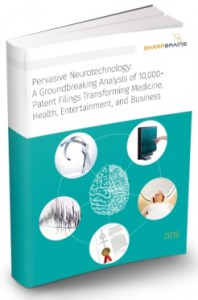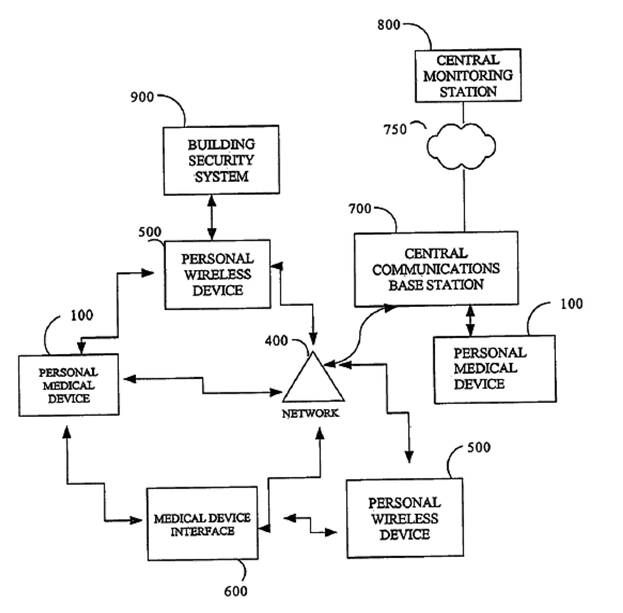The future of EEG-based personal devices monitoring brain function: Key neurotechnology patent #26
Today we highlight a very interesting 2006 patent assigned to Phillips and Accenture — who have been collaborating to develop software for EEG-based operation of home appliances to aid patients suffering from neurogenerative diseases such as ALS (amyotrophic lateral sclerosis).
U.S. Patent No. 7,138,902: Personal medical communication device and system
- Assignee(s): Phillips, Accenture
- Inventor(s): Raymond J. Menard
- Technology Category: EEG
- Issue Date: November 21, 2006
SharpBrains’ Take:
The ‘902 patent relates to techniques and systems for personal medical devices, evidencing the trend (as described in Background of the Specification) of the expansion of medical service delivery from strictly within medical centers into the homes and/or mobile lifestyles of patients. Some embodiments of the disclosed system relate to a first personal device that monitors brain function with EEG detectors and communicates wirelessly with a second, short-range device. The system may be used for remote medical monitoring, although the scope of the claims (such as the illustrative claim provided below) does not explicitly limit the system’s applications as such. Indeed, the ‘902 patent was initially assigned to Philips’ Netherlands subsidiary, which recently announced a partnership with Accenture (another top assignee in this report) to develop software for EEG-based operation of home appliances to aid patients suffering from neurogenerative diseases such as ALS (amyotrophic lateral sclerosis). The commercialization of the systems described in the ‘902 patent, the extensive claim set (spanning 57 claims including four independent claims), and the disclosure in the trending field of home-based medical applications and monitoring are among the factors making the ‘902 patent a key neurotechnology patent.
Abstract:
A personal and/or institutional health and wellness communications system, which may be used for a variety of emergency and non-emergency situations using two-way communication devices and a bi-directional communication network. In one application two-way pagers are adapted for use in the system. In one application cellular devices are adapted for use in the system. In one application an assisted living response center is established using various embodiments of the present personal and/or institutional communications system. The system provides multiple levels of prioritization, authentication of person (task, step, process or order), and confirmation via interrogation of person, device, or related monitor. One embodiment provides a method for receiving, evaluating and responding to calls received from a subscriber, patient, related party, or health care provider or health care system.
Illustrative Claim 1. A bi-directional wireless communication system comprising:
(a) a first personal device, the first personal device further comprising:
- a processor;
- a memory;
- a power supply;
- at least one detector input; and
- a short-range bi-directional wireless communications module;
(b) a second device communicating with the first device, the second device having a short-range bi-directional wireless communications module compatible with the short-range bi-directional wireless communications module of the first device; and
c) a security mechanism governing information transmitted between the first personal device and the second device.
 To learn more about market data, trends and leading companies in the digital brain health space –digital platforms for brain/ cognitive assessment, monitoring and enhancement– check out this market report. To learn more about our analysis of 10,000+ patent filings, check out this IP & innovation neurotech report.
To learn more about market data, trends and leading companies in the digital brain health space –digital platforms for brain/ cognitive assessment, monitoring and enhancement– check out this market report. To learn more about our analysis of 10,000+ patent filings, check out this IP & innovation neurotech report.



